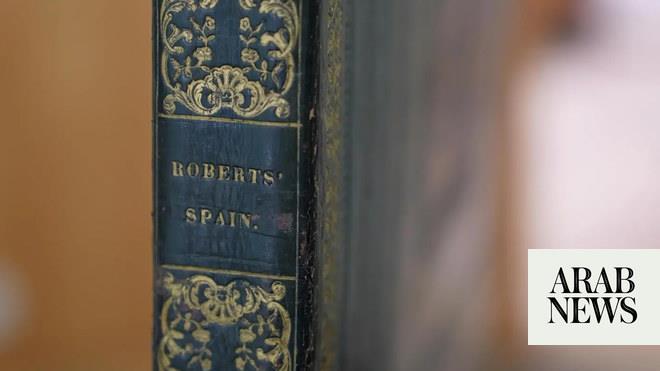
RIYADH: Historical coins from around the Arab and Islamic world are prominent artifacts that can reveal the religious, political, economic, social, and artistic events that occurred in the era they originated. The King Abdulaziz Public Library in Riyadh boasts a collection of more than 8,100 historical coins made of gold, silver and other metals.
The study of these coins is related to various areas of life as well as to the countries and places where they were minted. The coinage process took place in many Arab and Islamic nations and regions, including Makkah and Madinah, as well as the Islamic Caliphate’s locations, namely in Damascus, Baghdad, Cairo, Tunisia and Andalusia.
Initially, dinars were minted in the same way as Byzantine bronze coins — portraying the Roman ruler Heraclius with his two sons — at the mint in Alexandria. The Islamic currency began its development at the beginning of the year 692 A.D. during the reign of the Umayyad Caliph Abd Al-Malik ibn Marwan. NUM BER 8k+
The King Abdulaziz Public Library in Riyadh boasts a collection of more than 8,100 historical coins made of gold, silver and other metals.
The King Abdulaziz Public Library’s coin collection covers all Islamic periods of the past 1,400 years. The collection also has a wide geographical coverage which includes India and Central Asia in the East, Morocco and Andalusia in the West, the Caucasus in the North, and Yemen and Oman in the South.
According to some experts, the coins at the library are part of one of the most important and distinguished collections preserved in the Kingdom. The library possesses rare Arab and Islamic coins dating back to the Umayyad, Abbasid, Fatimid, Ayyubid, Atabeg, Seljuk and Mamluk eras, which were found in the Islamic Levant and Maghreb countries until the Ottoman era.
The first Arab Islamic dinar can be found at the library; it is distinguished by the fact that it is the first Arab Islamic coin to be minted, given that the coins used in the early Islamic era were minted in non-Islamic countries.
According to a report by Saudi Press Agency, the coin is engraved with the inscription of the Shahadah (Islamic testimony of faith), and the obverse shows “a pole on four stands topped with a small ball to the right and Iota Beta in Greek to the left, which refers to the number 12.” The reverse of the coin shows “an image of three persons, the Byzantine emperor and his two sons, wearing Arab traditional costumes which are different from the Byzantine costumes that appear on the Byzantine dinar.” It weighs 3.1 grams with a diameter of 18.3 millimeters.
Most of the Islamic coins at the library cannot be found anywhere else in the world. The library’s collection includes a Sasanian Arab dirham minted in Damascus in 695 A.D., and an Abbasid dirham minted in Basra in 758 A.D. during the reign of Caliph Abu Jaafar Al-Mansour. The term “slave” (originally written in Arabic “abed”) is engraved under the writings on the obverse of the Abbasid dirham coin, which distinguishes it from other coins minted during the reign of Caliph Al-Mansour as well as from those minted in Basra. It is noteworthy that the aforementioned term was never engraved on the coins minted earlier during the caliph’s reign.
The dirham is a valuable addition to the library’s collection, which also includes the Tulunid dinar minted in Palestine in 906 A.D. and the Makkah dinar minted in 1060 A.D., in addition to other coins belonging to the civilizations of the Arabian Peninsula.
The Arab and Islamic coins at the library fall within its cultural and knowledge strategy to preserve Arab and Islamic heritage using books, documents, photos, and artifacts in order to provide researchers and scholars with diverse historical material, and to highlight the valuable heritage of the Kingdom.
Coins are indexed and classified according to the scientific methods used in classifying international coin collections, and the library creates a database including all the basic data for each coin. The data is entered into an automated system available to the library’s researchers and specialists.












